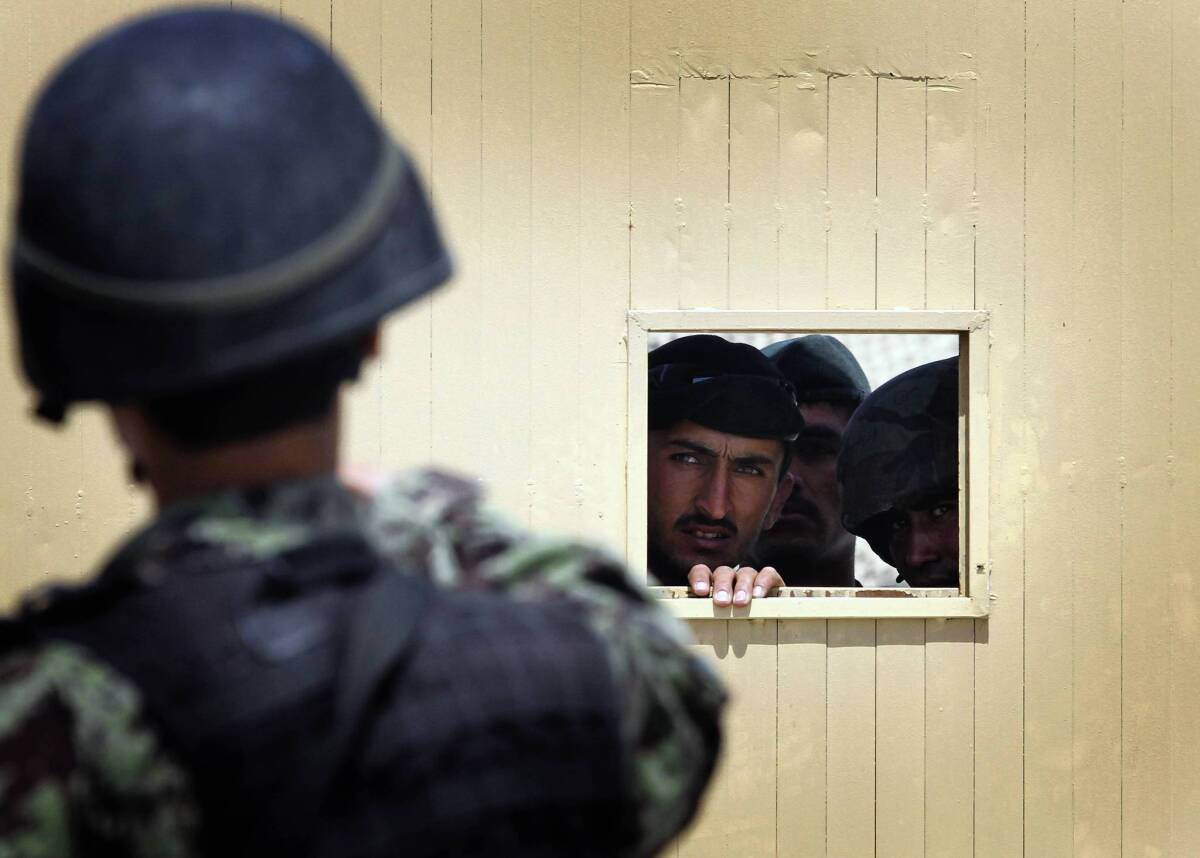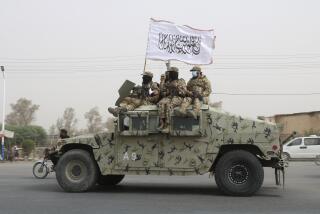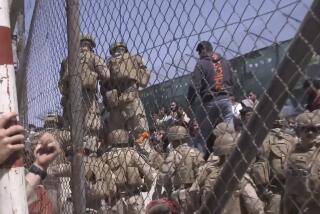The quiet pain of insider shootings in Afghanistan

On the morning of April 27 last year, Afghan Air Force Col. Ahmed Gul walked into a control room on the Afghan military side of the Kabul international airport. He was armed with a Smith & Wesson pistol provided by the United States military.
Within minutes, eight U.S. Air Force advisors and an American contractor were shot dead. The advisors were executed with bullets to the head. The nine killings remain the single deadliest incident among insider attacks that have targeted U.S. and coalition forces in Afghanistan.
An Air Force investigation concluded that Gul, who had been radicalized by Islamist extremists, acted alone. A preliminary report by U.S. Central Command recommended enhanced vetting procedures for Afghan forces and stronger base security measures for American military personnel training Afghan soldiers and police.
Widows of two of the dead officers, along with a former Air Force legal officer, are convinced that Gul had help from fellow Afghan officers.
“You’d have to suspend disbelief to assume one Afghan airman could shoot and kill nine Americans, eight of them armed and well-trained,” said retired Air Force Lt. Col. Sally Stenton, a former civilian police investigator who was a legal officer assigned to the airport the day of the attack.
The three women contend that the Air Force failed to uncover Gul’s radicalization in Pakistan and Kabul — and the vows he made to kill Americans.
Although insider attacks in Afghanistan are persistent — at least 80 attacks and 122 coalition deaths since 2007 — no single incident seems to have registered on the public consciousness in the United States. Few family members of those killed have spoken out.
The number of attacks and deaths has risen each year: There were two attacks and two deaths in 2007; 21 attacks and 35 deaths last year; 42 attacks and 58 deaths so far this year, including 35 Americans.
Stenton and the two widows have accused the Air Force of not providing proper security at the facility. They say procedures put in place since the attack have failed to stem the rash of killings by America’s purported allies.
“The American government is putting a Band-Aid on the issue,” said retired Air Force Capt. Suzanna Ausborn, whose husband, Air Force Maj. Jeffrey Ausborn, was killed at the airport.
Miriam Nylander Hamilton, a former Air Force enlistee whose husband, Capt. Nathan Nylander, also died that April morning, said the U.S. military was continuing to expose its forces to turncoat Afghan security force members — or insurgents posing as army or police. She said her husband told her that commanders emphasized maintaining good relations with Afghans, rather than focusing on advisors’ security.
Ausborn, Hamilton and other widows have petitioned Congress for a new investigation while raising questions about the official Air Force version of the killings.
The two widows and Stenton have pored over a redacted Air Force report, the Central Command report and a separate Air Force chronology. They point out that 14 Afghans were in the control room when Gul opened fire. None were killed or seriously wounded.
The U.S. Air Force investigation quoted Afghans as saying they fled or took cover when Gul opened fire. The reports, the three women said, indicated the Afghans did not attempt to rescue or treat the wounded advisors.
An Afghan Air Force colonel told investigators he thought Gul “had a connection to a terrorist cell because the attack was too coordinated to be a random act.”
One of Gul’s relatives told U.S. investigators that Gul, while in Pakistan between 2006 and 2008, was radicalized at a mosque. Gul was angry that foreigners had invaded Afghanistan and told family members he “wanted to kill Americans,” the relative said.
After returning to Afghanistan in 2008, Gul fell under the influence of a radical, anti-American mosque in Kabul, according to his supervisor, an Afghan colonel. Gul’s “views were boiling over and extreme,” the colonel told investigators.
According to the Air Force report, Gul opened fire while standing inside the control room. Maj. Ausborn was one of the first two Americans shot. Gul then shot five more Air Force advisors, including a female sergeant and an American civilian contractor.
Gul paused to reload and retrieve the pistol of a U.S. Air Force lieutenant colonel he had shot. Americans in an adjoining conference room ran into a hallway, where two U.S. Air Force captains — including Nathan Nylander — drew their weapons. Nylander was wounded in both thighs and subsequently shot in the head by Gul. Investigators concluded that Nylander’s handgun had jammed during the shootout. The other captain was not injured.
Gul was wounded and retreated down a hallway. Investigators believe he paused to write “God is the only one” in blood on a wall. He went upstairs and apparently shot himself in the chest and left side — possibly after being wounded by an Afghan military response team.
Public affairs officers for the Air Force and Central Command referred questions to the International Security Assistance Force.
James Graybeal, a spokesman for the force in Kabul, says the Afghan military has tightened the vetting process by, among other things, adding investigative agents and revetting soldiers returning from leave. More than 100 Afghan soldiers have been arrested for possessing false identification, and several have been arrested on suspicion of aiding the Taliban.
The international force has beefed up self-defense training and added security so that troops stationed next to Afghan forces can better defend themselves, Graybeal said. Armed soldiers also have been designated to watch over advisors.
Troops are also undergoing renewed cultural training on Afghan customs, Graybeal said. A May 2011 report on insider attacks attributed many to personal animosities and perceived insults stemming from cultural clashes. Marine Gen. John Allen, the top commander in Afghanistan, said in August that Taliban infiltration was responsible for only about a quarter of insider attacks.
Hamilton said it was agonizing to relive her husband’s death while studying the Air Force reports — and deeply troubling to hear about new insider killings every month.
“The worst thing is knowing there are more widows and more kids going through the same horrible things we went through,” Hamilton said. “It has to stop.”
More to Read
Start your day right
Sign up for Essential California for news, features and recommendations from the L.A. Times and beyond in your inbox six days a week.
You may occasionally receive promotional content from the Los Angeles Times.







